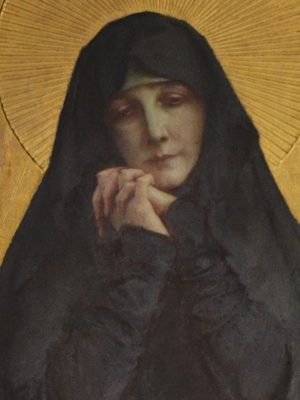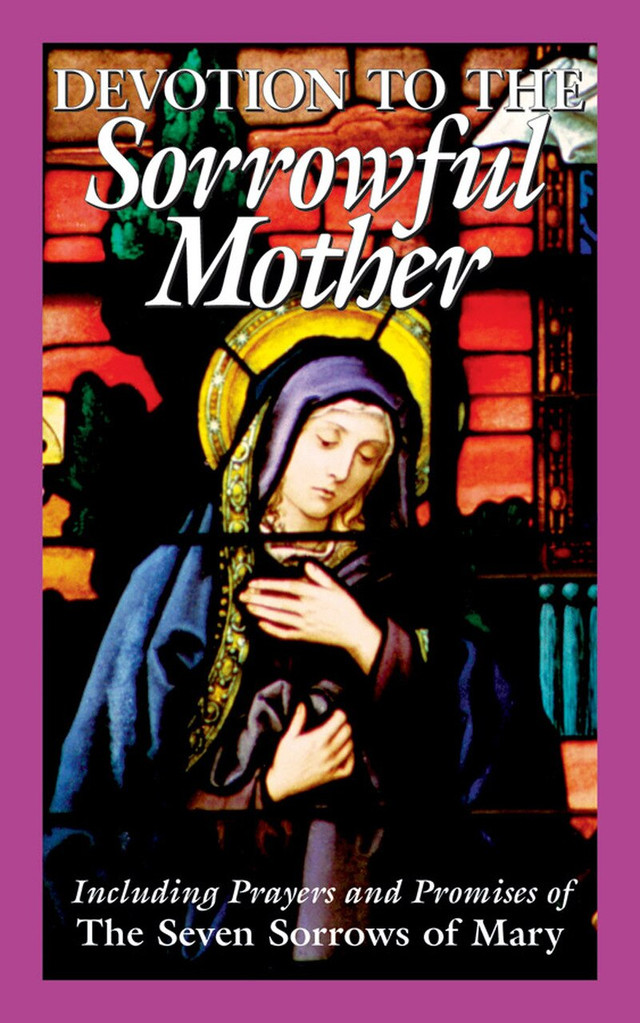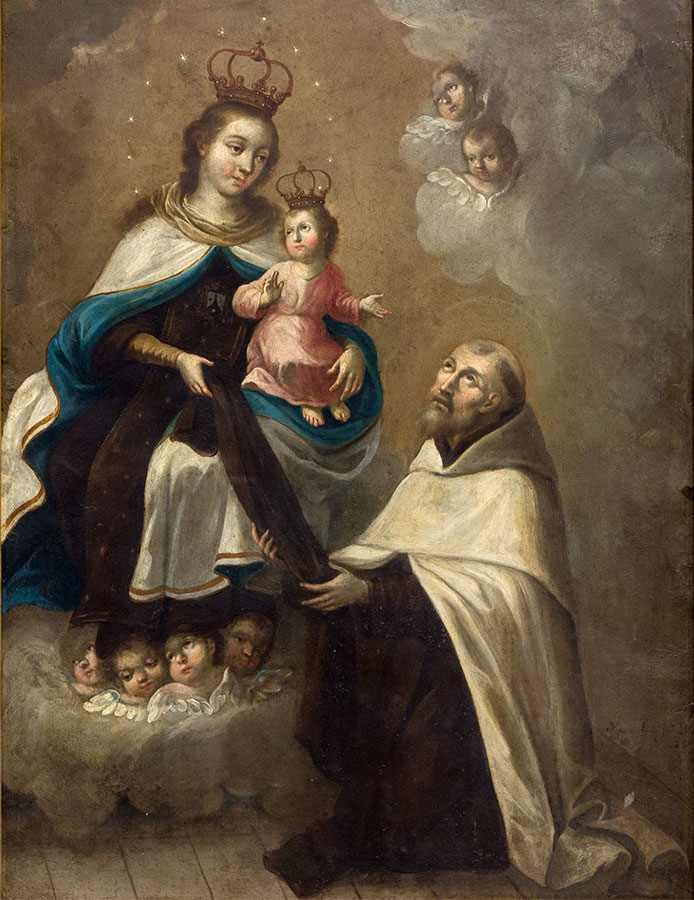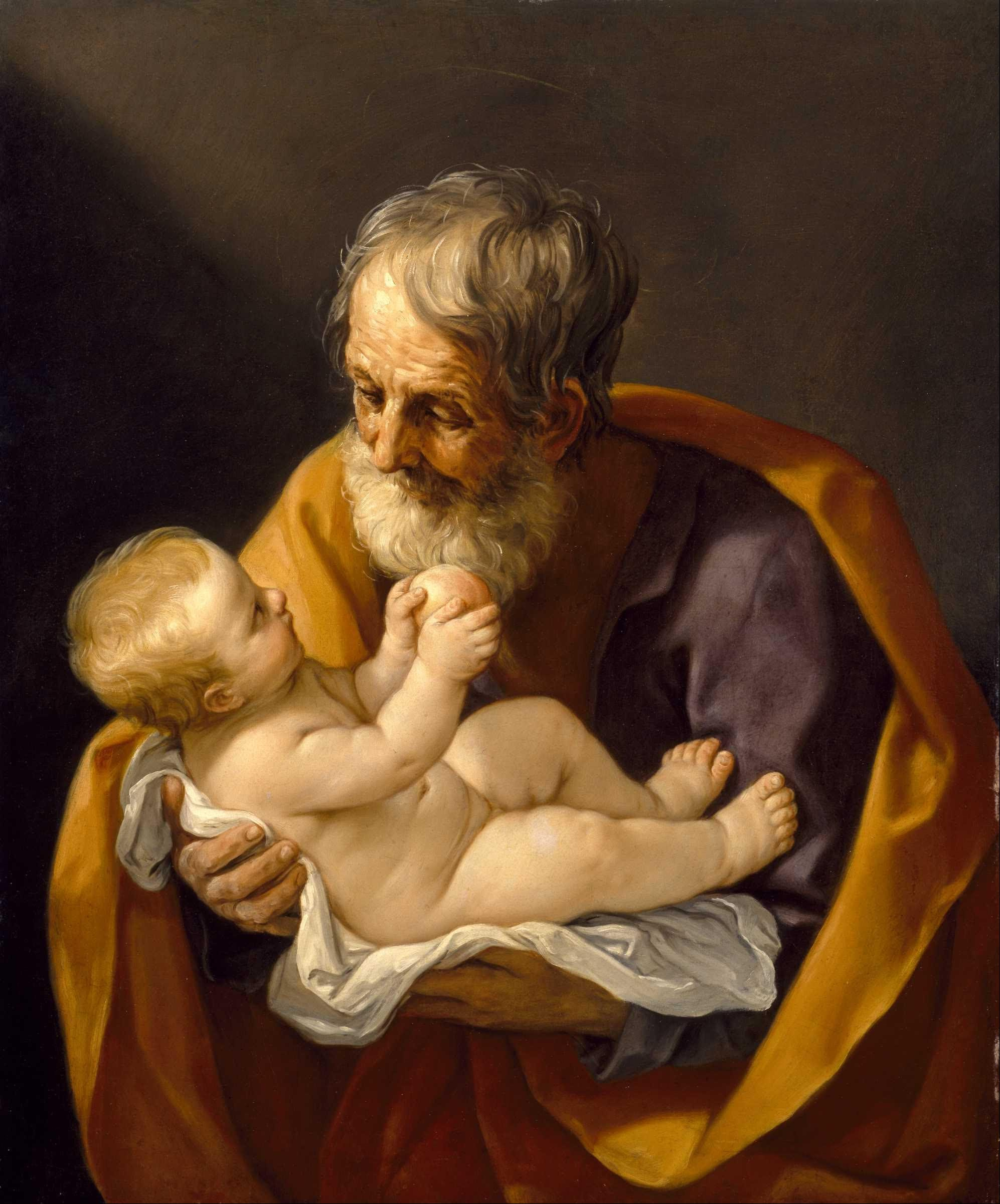There is no soul among the sons of man who has experienced sorrow as deeply as Our Lady. Her heart, having been pierced by the sword of suffering, is ever-ready to assist us through our own afflictions. This excerpt, taken from Devotion to the Sorrowful Mother, reveals Our Lady of Sorrows as the comforter of the afflicted, the mother of mercy, and a guide to sanctity.
DEVOTION to the sorrows of Mary is a source of great graces because it is so pleasing to our Divine Lord. Many holy writers say that through her sufferings Mary placed an obligation, as it were, upon her Son, which constrains Him to grant her whatever she asks of Him. As soon as we sympathize with the sorrows of His Mother, we draw our Saviour to ourselves. “He is,” says St. Bernard, “at the disposal of those who devoutly meditate on the sufferings of His Mother.” Our Lord once said to Bl. Veronica of Binasco: “My daughter, the tears which you shed in compassion for My sufferings are pleasing to Me, but bear in mind that on account of My excessive love for My Mother, the tears you shed in compassion for her sufferings are still more precious.” There are, indeed, few devotions for which our Saviour has made greater promises than for this one, and there are few that are more pleasing to Him.
The Comforter of the Afflicted
Through her martyrdom, Mary has become in a special way the comforter of the afflicted. It was by her own experience of sorrow that she was taught the sympathy which enables her to comfort her children in all their afflictions. God gave her a mighty and a sympathetic heart for this great task.
For all God’s children, the way to Heaven leads across the mount of Calvary—the way of trial and suffering. In the company of our Sorrowful Mother, we walk more easily, fight more courageously, and suffer more patiently, perseveringly and joyfully; for she holds up before us not only the example of the sufferings and death of her Divine Son, but also the victory, the joy and the glory which He has won through His sufferings.
How often do we grow impatient, fainthearted, despondent and inconstant in suffering . . . how often without endurance, without resignation, full of complaints and murmurings! Oh, let us deeply engrave in our hearts the sorrows of Mary! May she, our Sorrowful Mother, ever be our model in suffering, in the patient endurance of trials, and in the humble acceptance of sorrows and afflictions.When the hand of God lays a heavy cross upon our shoulders, let us turn to Mary Sorrowing, and we shall obtain consolation and strength to carry the cross patiently and meritoriously.
The Mother of Mercy
Devotion to the sorrows of Mary should be practiced especially by souls who wish to rid themselves of sinful habits. This devotion nourishes the spirit of compunction, affords great consolation, strengthens confidence in God’s mercy, draws down the special protection of the Blessed Mother in the hour of temptation, and preserves the converted sinner from relapsing into sin.
The Mother of God once said to her faithful servant St. Bridget: “No matter how numerous a person’s sins may be, if he turns to me with a sincere purpose of amendment I am prepared forthwith to receive him graciously, for I do not regard the number of sins he has committed, but look only upon the dispositions with which he comes to me; for I feel no aversion in healing his wounds, because I am called and am in truth the Mother of Mercy.”
“Poor abandoned sinners,” exclaims St. Alphonsus Liguori, “do not despair! Raise your eyes to Mary and be comforted, trusting in the clemency of this good Mother. For she will rescue you from the shipwreck you have suffered and conduct you to the haven of salvation.”
The Mother of Sorrows likewise lends her gracious assistance in bringing back to the True Fold those who, unhappily, have been separated from the household of the Faith.
The great apostleship of prayer which was organized in England for the conversion of that country invoked Mary as the Mother of Sorrows. The fruits of that society were formerly so great that annually ten thousand or more Protestants returned to the True Fold. Anyone who will but try this devotion will experience that the Blessed Virgin will not leave a single Hail Mary unrewarded.
Those who implore her aid in virtue of her sufferings may confidently expect her
assistance. It seems that this devotion is destined by Heaven to avert God’s punishment from sinful mankind, or at least to mitigate it.
A Guide to Sanctity
The life of St. Gabriel Possenti, who died February 27, 1862 at the age of twentyfour, manifests how quickly the Sorrowful Mother guides her clients to sanctity. The early life of the Saint gave no presage of his future holiness. In fact, for some time he resisted the grace of a religious vocation. However, having been called in a special manner by Our Lady to enter the Passionist Order, the hitherto rather worldly and pleasure-loving youth was changed to the humble, mortified Gabriel of Our Lady of Sorrows.
It has been asserted that one of the chief sources of his sanctity was his tender, fervent devotion to the Sorrowful Mother. A particular love for her prompted him to choose this title for his name in religion. His devotion was concentrated on the Dolorous Mother. His meditations were made in her pierced heart; his constant desire was to meet her approval. Devotion to her clothed all his virtues and led him in a short time to the height of religious perfection. He spoke of her sorrows very often. She was his predominant thought, his heart, his all. “My heaven is the dolorous Heart of my dear Mother!” he would often say.
St. Gabriel sought every means to promote this devotion among his companions. “When we have a few minutes left over from our office,” he would say to them, “we can use them to no better advantage than in compassionating our dear Mother.” If he had a little free time during the day, he always employed it in this exercise. “Let us not forget her anguish, and at the hour of death, she will console and assist us,” he would say. Nor was his hope confounded. During his last illness, which he bore with heroic patience, he manifested most touching marks of affection for his sorrowing Mother. Often he would press her picture to his parched and burning lips. His dying act was to place an image of the Sorrowful Virgin upon his heart; then, raising his eyes to Heaven, he cried with indescribable confidence and love: “O my Mother, make haste!”
“He became a saint in so short a time and has had such a beautiful death!” exclaimed a brother religious at the edifying death of this angelic youth. Truly, Mary Sorrowful was his guide; she led him quickly up the mount of perfection and, at his peaceful death, enclosed him securely in the sanctuary of her wounded heart.
Contrary to custom, this youthful Saint was beatified less than fifty years after his death. His canonization took place on May 13, 1920.
ooo
This article is taken from a chapter in Devotion to the Sorrowful Mother by The Benedictine Convent of Clyde which is available from TAN Books.









